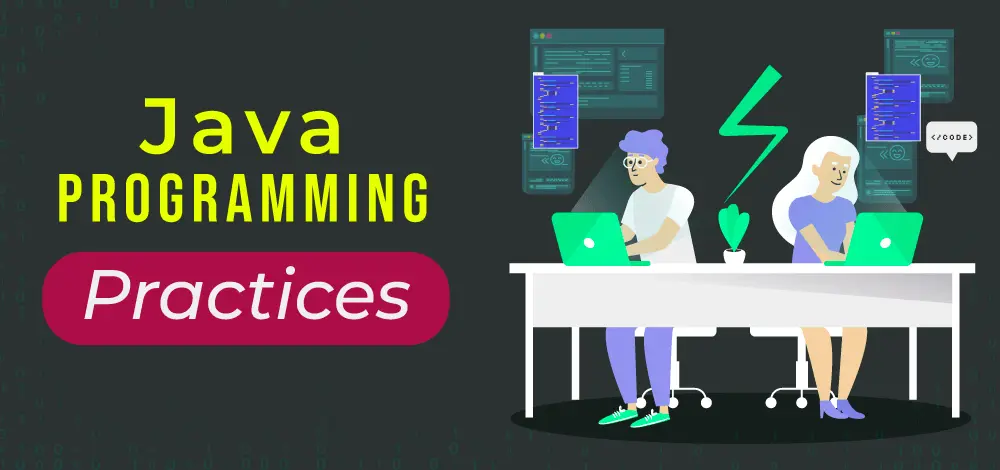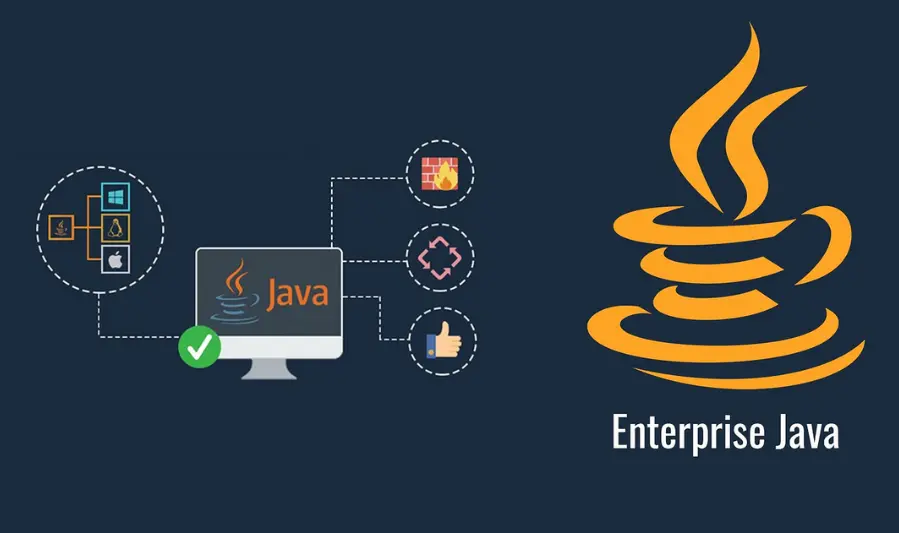Introduction
Java: A Beginner-Friendly, Object-Oriented Language
Java is one of the most popular and beginner-friendly programming languages in the world. Known for its simplicity, object-oriented structure, and platform independence, Java serves as an excellent foundation for anyone starting their coding journey. Its clear syntax and vast community support make it easy for beginners to understand core programming concepts and build real-world applications.
The Importance of Practicing Coding
Learning Java — or any programming language — requires consistent practice. Writing, testing, and debugging code not only strengthen problem-solving skills but also help develop a deeper understanding of how programming logic works. Regular coding practice is key to mastering Java fundamentals and becoming a confident developer.
What This Article Covers
In this article, we’ll focus on simple Java coding tutorials with practical examples.
Step-by-Step Learning Approach
Each example is designed to help beginners understand essential Java concepts through hands-on practice.
Building a Strong Foundation
By the end, you’ll gain practical experience with the basics — from writing your first Java program to exploring key features like variables, loops, and classes.
Why Practice Java Coding

The Power of Regular Practice
Regular coding practice is the key to mastering programming logic. By writing code consistently, you learn how to think like a programmer — breaking down problems, designing solutions, and improving your ability to debug errors efficiently. Each time you practice, you reinforce your understanding of concepts such as loops, conditionals, and data structures, making them second nature over time.
Java’s Wide Range of Applications
Java’s versatility is one of the main reasons it remains a top choice among developers worldwide.
Popular Uses of Java
- Web Development: Java is widely used in building dynamic, secure web applications through frameworks like Spring and JavaServer Faces (JSF).
- Android Development: Most Android apps are built using Java or Kotlin, which is based on Java’s structure.
- Backend Systems: Java powers robust enterprise-level backend systems for banks, e-commerce sites, and large corporations due to its stability and scalability.
Building Problem-Solving Skills
Even simple Java programs — like creating a calculator, sorting numbers, or printing patterns — help build essential problem-solving skills. Each small project strengthens your logical thinking and teaches you how to approach complex coding challenges systematically. Over time, these small exercises lay the groundwork for tackling advanced projects with confidence.
Getting Started with Java

Essential Tools You’ll Need
Before you begin coding in Java, it’s important to set up your development environment properly.
1. Install the Java Development Kit (JDK)
The JDK (Java Development Kit) contains everything you need to compile and run Java programs — including the Java compiler and runtime environment. You can download the latest version from Oracle’s official website or use an open-source version like OpenJDK.
2. Choose an IDE
An IDE (Integrated Development Environment) makes writing Java code easier and more efficient. Popular choices include:
- Eclipse – Great for beginners and widely used in enterprise environments.
- IntelliJ IDEA – Offers smart code suggestions and powerful debugging tools.
- Visual Studio Code (VS Code) – Lightweight and flexible, with Java support via extensions.
Writing and Running Your First Java Program
Once your tools are set up, you can write your first Java program:
Step-by-Step Example
- Create a new Java file named
HelloWorld.java. - Write the following code:
public class HelloWorld { public static void main(String[] args) { System.out.println("Hello, World!"); } } - Save the file and compile it using the command:
javac HelloWorld.java - Run the program with:
java HelloWorld - You should see the output:
Hello, World!
Tips for Java Beginners
Write Clean and Readable Code
Use proper indentation, consistent naming conventions, and meaningful variable names. Clean code is easier to debug and maintain.
Use Comments Effectively
Add comments (// for single-line or /* ... */ for multi-line) to explain what your code does. This helps others — and your future self — understand your logic.
Learn to Debug
Errors are part of programming! Learn to read error messages carefully and use your IDE’s debugging tools to trace and fix issues. Each bug you solve improves your problem-solving ability.
Simple Java Programs for Practice
4.1 Hello World Program
Concept: Basic Syntax and Output Statement
This is the simplest Java program, often the first one every beginner writes. It demonstrates how to display text on the screen.
public class HelloWorld {
public static void main(String[] args) {
System.out.println("Hello, World!");
}
}
Explanation:
public class HelloWorlddefines a class named HelloWorld.public static void main(String[] args)is the entry point of any Java program.System.out.println()prints text to the console.
4.2 Add Two Numbers
Concept: Variables and Arithmetic Operations
This program adds two numbers and displays the result.
public class AddNumbers {
public static void main(String[] args) {
int num1 = 10;
int num2 = 20;
int sum = num1 + num2;
System.out.println("The sum is: " + sum);
}
}
Explanation:
int num1andint num2are integer variables.- The
+operator adds them. - The result is stored in
sumand printed.
4.3 Check Even or Odd
Concept: Conditional Statements and Modulus Operator
This program checks whether a number is even or odd.
public class EvenOdd {
public static void main(String[] args) {
int number = 7;
if (number % 2 == 0) {
System.out.println(number + " is even.");
} else {
System.out.println(number + " is odd.");
}
}
}
Explanation:
%(modulus) gives the remainder when dividing a number.- If the remainder is
0, the number is even; otherwise, it’s odd.
4.4 Find the Largest Number
Concept: Nested Conditions and Comparison Operators
This program finds the largest among three numbers.
public class LargestNumber {
public static void main(String[] args) {
int a = 25, b = 40, c = 15;
if (a >= b && a >= c) {
System.out.println(a + " is the largest number.");
} else if (b >= a && b >= c) {
System.out.println(b + " is the largest number.");
} else {
System.out.println(c + " is the largest number.");
}
}
}
Explanation:
- The program compares three integers using
if-elsestatements and logical operators (&&). - It prints the largest value based on the conditions.
4.5 Simple For Loop Example
Concept: Iteration Using Loops
This example uses a for loop to print numbers from 1 to 5.
public class ForLoopExample {
public static void main(String[] args) {
for (int i = 1; i <= 5; i++) {
System.out.println("Count: " + i);
}
}
}
Explanation:
- The
forloop repeats the print statement as long asi <= 5. - The loop variable
iincreases by 1 after each iteration.
4.6 Reverse a String
Concept: String Manipulation and Character Iteration
This program reverses a given string.
public class ReverseString {
public static void main(String[] args) {
String str = "Java";
String reversed = "";
for (int i = str.length() - 1; i >= 0; i--) {
reversed += str.charAt(i);
}
System.out.println("Reversed string: " + reversed);
}
}
Explanation:
str.length()gives the string’s length.- The loop iterates backward through the string.
- Each character is appended to
reversed.
Additional Practice Ideas
Expand Your Java Skills Through Practice
Once you’ve mastered the basic Java programs, try these slightly more challenging exercises. They’ll help strengthen your understanding of loops, conditionals, arrays, and logical thinking.
5.1 Check for Prime Numbers
Concept: Loops and Conditional Logic
This program checks whether a given number is prime — meaning it’s divisible only by 1 and itself.
public class PrimeCheck {
public static void main(String[] args) {
int number = 17;
boolean isPrime = true;
if (number <= 1) {
isPrime = false;
} else {
for (int i = 2; i <= number / 2; i++) {
if (number % i == 0) {
isPrime = false;
break;
}
}
}
if (isPrime) {
System.out.println(number + " is a prime number.");
} else {
System.out.println(number + " is not a prime number.");
}
}
}
Explanation:
- The loop checks divisibility from 2 up to half of the number.
- If any divisor is found, the number isn’t prime.
5.2 Simple Calculator Using Switch-Case
Concept: User Input and Conditional Control
This program performs basic arithmetic operations based on the user’s choice.
import java.util.Scanner;
public class SimpleCalculator {
public static void main(String[] args) {
Scanner sc = new Scanner(System.in);
System.out.print("Enter first number: ");
double num1 = sc.nextDouble();
System.out.print("Enter second number: ");
double num2 = sc.nextDouble();
System.out.print("Enter operator (+, -, *, /): ");
char operator = sc.next().charAt(0);
double result;
switch (operator) {
case '+':
result = num1 + num2;
break;
case '-':
result = num1 - num2;
break;
case '*':
result = num1 * num2;
break;
case '/':
result = num1 / num2;
break;
default:
System.out.println("Invalid operator!");
return;
}
System.out.println("Result: " + result);
}
}
Explanation:
- The program takes two numbers and an operator as input.
- The
switchstatement executes the correct arithmetic operation.
5.3 Sum of Array Elements
Concept: Arrays and Loops
This program finds the total sum of all numbers in an array.
public class ArraySum {
public static void main(String[] args) {
int[] numbers = {2, 4, 6, 8, 10};
int sum = 0;
for (int num : numbers) {
sum += num;
}
System.out.println("Sum of array elements: " + sum);
}
}
Explanation:
- The enhanced for loop iterates through each element in the array.
- Each element’s value is added to
sum.
5.4 Pattern Printing
Concept: Nested Loops and Logical Design
This program prints a simple right-angled triangle of stars (*).
public class StarPattern {
public static void main(String[] args) {
int rows = 5;
for (int i = 1; i <= rows; i++) {
for (int j = 1; j <= i; j++) {
System.out.print("* ");
}
System.out.println();
}
}
}
Explanation:
- The outer loop controls the number of rows.
- The inner loop controls how many stars are printed per row.
- You can modify the logic to print different shapes (pyramids, number patterns, etc.) for extra practice.
Common Mistakes Beginners Make
6.1 Forgetting to Close Braces or Semicolons
Concept: Syntax Errors
Beginners often forget to add closing braces } or semicolons ; at the end of statements.
Tip: Always double-check that each block of code has a matching opening and closing brace and that every statement ends with a semicolon. IDEs like Eclipse or IntelliJ often highlight these mistakes immediately.
6.2 Confusing Assignment (=) with Comparison (==)
Concept: Logical Errors
=is used to assign a value to a variable.==is used to compare two values.
int x = 5;
if (x == 5) { // Correct
System.out.println("x is 5");
}
Tip: Using = instead of == in a condition will cause a compile-time or logical error. Always double-check your comparisons.
6.3 Not Using Meaningful Variable Names
Concept: Code Readability
Using vague names like a, b, or temp makes your code hard to understand.
Tip: Choose descriptive names that reflect the variable’s purpose. For example:
int totalScore = 100;
double averageAge = 25.5;
Readable code is easier to debug, maintain, and share with others.
6.4 Skipping Code Testing After Each Change
Concept: Debugging Best Practices
Beginners often write large chunks of code and test only at the end. This makes it harder to identify where errors occur.
Tip: Test your code frequently after small changes. This helps catch mistakes early and builds confidence in your programming skills.
Best Practices for Learning Java
7.1 Write Code Daily, Don’t Just Memorize Syntax
Concept: Consistent Practice
Learning Java is not about memorizing syntax; it’s about understanding how to solve problems using code. Writing programs daily, even small ones, reinforces concepts and helps you think logically.
7.2 Debug Errors Patiently
Concept: Learning Through Mistakes
Errors are an essential part of programming. Instead of getting frustrated, take time to understand what went wrong and why. Debugging helps you improve problem-solving skills and prevents repeating the same mistakes.
you may also like to read these posts:
Smart Budget Planning for Families: A Practical Guide to Financial Harmony
Discover the Beauty of Indonesian Traditional Fashion Styles
Learn Java Easily Online with Simple Coding Examples
Mundo ng Bukas: Ang Papel ng Inobasyon sa Pag-unlad
7.3 Practice on Online Platforms
Concept: Hands-On Learning
Platforms like LeetCode, HackerRank, and Replit provide interactive exercises and coding challenges. Practicing on these platforms exposes you to a variety of problems and helps you learn efficient ways to write Java code.
7.4 Join Coding Communities or Study Groups
Concept: Collaboration and Motivation
Being part of a coding community or study group keeps you motivated and provides support when you face challenges. You can share knowledge, learn new tips, and get feedback on your code — which accelerates your learning journey.
Faqs:
What is the best way to practice Java coding for beginners?
Start with simple programs like Hello World, arithmetic operations, and loops. Regular hands-on practice helps build a strong foundation in Java fundamentals.
Do I need to install Java to practice coding online?
No, you can practice Java online using platforms like Replit, HackerRank, or online IDEs without installing Java on your computer.
How long does it take to learn basic Java programming?
With consistent practice of simple programs, beginners can learn the basics in 2–4 weeks, depending on daily effort and focus.
Are these simple Java programs enough to become a Java developer?
These programs help build a strong foundation. To become a Java developer, you need to learn advanced topics like Object-Oriented Programming, data structures, algorithms, and real-world project development.
Can practicing small Java programs improve problem-solving skills?
Yes, working on simple programs helps develop logical thinking, debugging skills, and problem-solving abilities, which are essential for more complex programming challenges.
Conclusion
Practicing simple Java programs is the most effective way for beginners to strengthen their coding skills and gain confidence in programming. By starting with basic examples like Hello World, loops, conditions, and string manipulation, you build a solid foundation for advanced Java topics. Consistent practice, experimentation, and problem-solving are key to becoming a proficient Java developer. Start coding today, and gradually challenge yourself with more complex programs to master Java step by step.




